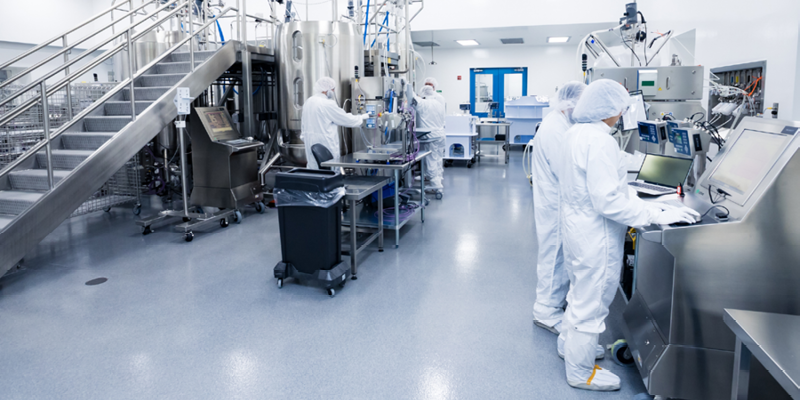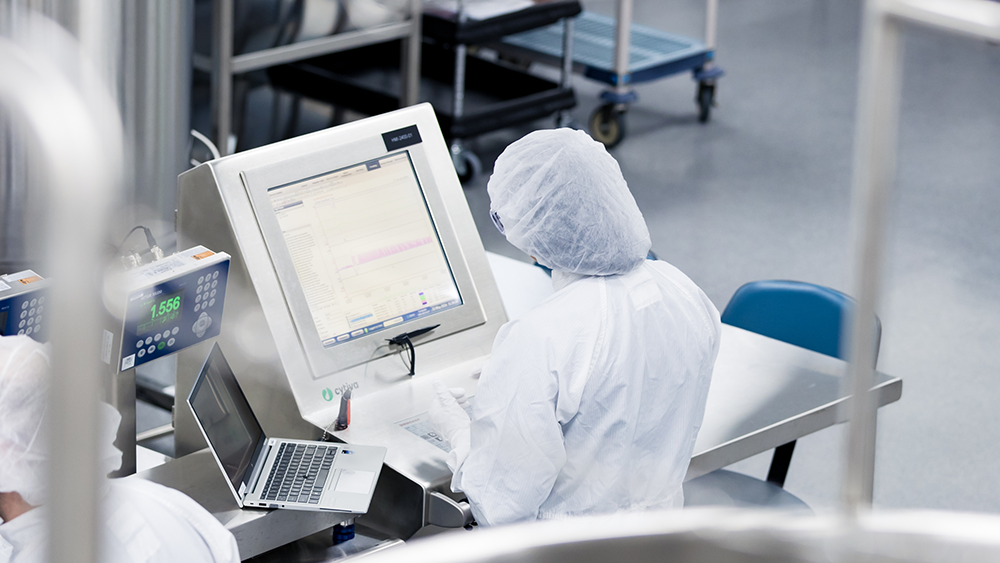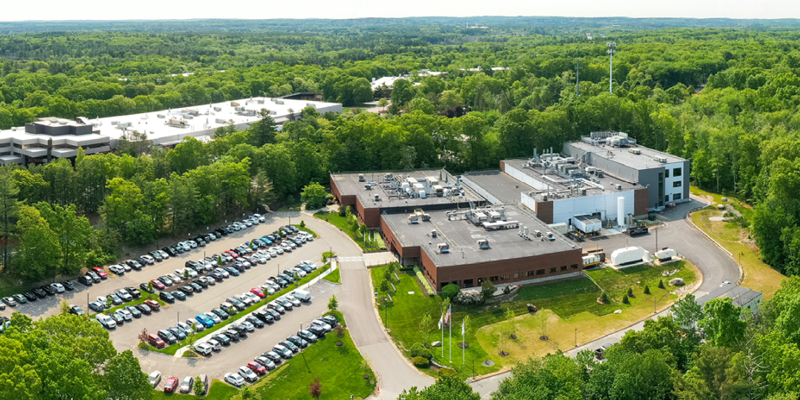Interview: Building on a Pioneering Biomanufacturing Legacy with Client Centricity

Rentschler Biopharma, a family-owned CDMO with a legacy of over 150 years, has long been positioned at the forefront of the biomanufacturing landscape, addressing evolving market demands with strategic expansions and innovation. The company has recently undergone significant transformations, including expansion at the state-of-the-art U.S. site in Milford, Massachusetts, and exploring advancements in cell and gene therapies and protein therapeutics. Rentschler's approach to strategic alliances and its commitment to precision medicine reflect its adaptive strategies in a competitive landscape. With plans for substantial growth, particularly in the U.S. market, the company aims to enhance its capabilities and solidify its position in key biopharmaceutical markets, focusing on emerging modalities and the increasing importance of advanced therapies. In this Q&A, Chief Executive Officer, Benedikt von Braunmühl and President and General Manager, U.S. Operations, Tom Roberts discuss Rentschler Biopharma’s history, strategic focus, and growth plans with Pharma’s Almanac Editor in Chief David Alvaro, Ph.D.
David Alvaro (DA): We could probably spend our entire time discussing Rentschler’s long history, but can you share a concise account of the key milestones and how the company has adapted its strategy to meet the evolving needs of the industry?
Benedikt von Braunmühl (BvB): Rentschler has a rich history dating back over 150 years: the company got its start in 1872 as a pharmacy in the city of Laupheim, Germany. A century later, we reinvented ourselves as one of the world’s first biotechnology companies. We helped lead the biomanufacturing revolution from the start, achieving the first global market approval for interferon beta in 1983.
In 2006, recognizing the significant growth potential in the United States, which is the largest biopharmaceutical market globally, we established our U.S. subsidiary, Rentschler Biopharma Inc. From 2008 to 2016, we undertook a significant expansion of our manufacturing facilities, introducing single-use bioreactors here in Laupheim. Between 2017 and 2021, we established pivotal strategic alliances: a partnership with Leukocare for formulation and one with Vetter for drug product manufacturing. In 2019, we acquired our key U.S. manufacturing site in Milford, Massachusetts. During the challenging COVID-19 pandemic, we were proud to play a key role in accelerating market access for the BioNTech/Pfizer vaccine. In 2021, we expanded into cell and gene therapy with a new facility in the dynamic Stevenage Life Sciences hub in Stevenage, UK.
Tom Roberts (TR): The decision to expand into the United States in 2019 was a strategic move to tap into the vibrant innovation across the country, particularly on the East Coast, a major biotech hub. The Milford site, which we acquired from Shire, was initially a single-product facility, but we began a comprehensive modernization project and transformed it into a state-of-the-art multi-product facility. Three years ago, we started the most significant expansion in Rentschler’s history, effectively doubling Rentschler’s global cGMP capacity.

DA: Throughout that history, Rentschler has remained family-owned. How does that influence the way the company balances honoring the legacy and adopting forward-looking strategies?
BvB: Ownership by the Rentschler family profoundly shapes our long-term vision, which is not swayed by the typical quarter-to-quarter pressures that drive publicly traded companies. This perspective has allowed us to shift appropriately as the industry evolves. We anticipated the coming significance of biotech products when we transitioned from a focus on small molecules to biologics 50 years ago, and we continue to adapt, for example, with current trends toward precision medicine and treatments for rare diseases.
Our corporate culture centered on integrity, reliability, and a strong client focus ensures we always meet client needs. This emphasis on values over immediate profits creates a stable environment that is conducive to long-term planning and execution. This commitment has always been, and will remain, the cornerstone of our corporate ethos.
Benedikt von Braunmühl, CEO
BvB: Additionally, being family-owned enhances our decision-making agility. Unlike corporations hampered by layers of bureaucracy, our streamlined governance structure facilitates quicker decisions without compromising oversight. This nimbleness is crucial in maintaining focus on our clients, especially in a landscape increasingly characterized by mergers and acquisitions that can introduce complexities.
TR: My first role was also with a privately owned German family company, and I value the consistency and core values that such environments foster. At Rentschler, these values are palpable and influence every aspect of our operations. As Benedikt mentioned, our culture is integral to our identity.
Family ownership ensures transparent and direct communication with the company’s leadership, which is involved in day-to-day operations and deeply understands our business challenges.
Our independence from private equity influences enables us to focus on sustainable growth and long-term goals rather than short-term gains. This stability and clarity of purpose attract professionals like me and many of our extraordinary employees, who value integrity and consistency. It allows us to focus entirely on utilizing and expanding our new capacities without the uncertainty of ownership changes, which are all too common in today's CDMO landscape.
Milford: The Beating Heart of Rentschler's U.S. Expansion
Rentschler Biopharma's Milford, Massachusetts facility stands as a cornerstone of the company's expansion into the U.S. market. Strategically positioned within Boston’s biotech hub, this state-of-the-art, multiproduct site is equipped to handle everything from clinical development to commercial-scale manufacturing, offering a flexible production setup that can cater to a wide variety of client projects.
The Milford site boasts a commercial track record, supported by cutting-edge single-use equipment designed for fed-batch processes. The facility provides attractive upscale options, with production capacities ranging from 500 L to 2,000 L, making it ideal for both small-scale clinical batches and larger commercial runs.
A significant milestone in Rentschler Biopharma’s more-than-150-year history, the recent expansion at the Milford site, known as Line 3, represents the most significant investment the company has ever made. This expansion added 22,000 square feet of manufacturing cleanroom space, effectively doubling Rentschler Biopharma's global cGMP capacity. The new state-of-the-art suite houses four 2,000-L single-use bioreactors with infrastructure to support further expansion if needed.
Line 3’s hybrid strategy for buffer preparation, utilizing both single-use and stainless-steel mixers, exemplifies the site’s commitment to innovation and flexibility. A fully automatic process automation system manages the transfer of buffers and media, enhancing both efficiency and reliability in production.
In recognition of its impact, Rentschler Biopharma's Milford facility was awarded the Gold in the 20th annual MassEcon Impact Awards, highlighting the site’s contribution to the local economy and its role in advancing the biopharmaceutical industry.
DA: With such a significant expansion into a new market at the Milford site, how did the company align that new team with the longstanding Rentschler culture?
TR: At Rentschler Biopharma, we have always served a diverse international client base, which has naturally necessitated effective cross-cultural integration. When expanding into the U.S. market with our Milford site, we anticipated the challenges inherent in transitioning across different business practices and organizational cultures between Europe and the United States. There are notable differences in business practices and organizational culture between Europe and the United States. To address this, we’ve focused on ensuring that our organizational structure facilitates effective cross-ocean collaboration and standardized processes across our global operations.
Our approach involves a matrix structure where, for example, the employees at the Milford site report to me, reflecting the local leadership, while also aligning with global operations. Our head of operations at Milford oversees the entire value chain from development to manufacturing, but he also reports to the Chief Operating Officer in Laupheim. This dual reporting structure enhances our collaborative efforts and allows us to leverage both local and global resources and expertise.
The integration and cultural alignment efforts at Milford have been exemplary. Our “One Rentschler” initiative emphasizes seamless communication and a unified company culture across all locations. By fostering an environment where every team member is integral, regardless of geographical and hierarchical differences, we’ve built a cohesive and effective global team.
Benedikt von Braunmühl, CEO
BvB: The successful operational start-up of our new production line at the Milford site, achieved on our first attempt, is a true testament to our success. This significant industry accomplishment highlights the strength and synergy of our global team. It underscores our commitment to a unified global structure and a shared cultural ethos that transcends our operations across locations.
TR: A standout example of our collaborative efforts involves the integration of a client from our Laupheim facility to the newly expanded production line in Milford. This technology transfer was made possible by the seamless alignment of our teams across continents. We sent our manufacturing experts to Laupheim to work directly with their counterparts, immersing themselves in the production processes to understand every detail of the product. This firsthand experience was crucial in transferring the product back to Milford. We also hosted members from the Laupheim team in Milford, where they lived locally and worked at our plant, ensuring a seamless transition and continuity of operations.
BvB: The client involved in this transfer was particularly impressed by our scientific capabilities. The discussions leading up to their commitment were extensive, reflecting our commitment to ensuring a smooth transition. Our success in meeting and exceeding client expectations is not just about competitive pricing; it's about demonstrating the scientific and operational excellence that Rentschler stands for. Another client shared a similar sentiment during their selection process, which is akin to choosing a long-term partner, not just a service provider. They explicitly trusted us with their project, emphasizing our client centricity and proven track record as a decisive factor. This level of trust and our ability to deliver consistently underscore our role as more than a service provider; we are a committed partner in our clients' long-term success.

DA: Speaking of success: Rentschler contributed to the development of 25% of the biopharmaceutical drugs that were approved by the U.S. FDA in 2023. Could you discuss the efforts that went into achieving this milestone, what it means for the company, and how you plan to build on this success?
TR: With the number of CDMOs increasing by roughly 20% over the last three years, surpassing 400 globally, it’s remarkable that a single, family-owned company like ours could contribute to such a significant fraction of the approved biotherapeutics in a single year. This achievement highlights the deep expertise of our personnel, as well as the flexibility and collaborative spirit of our teams across continents. From regulatory acumen to our robust quality systems, every element played a role in reaching this level of impact. This milestone not only highlights our capabilities but also sets a benchmark for our future endeavors.
Our role in expediting market access for the BioNTech/Pfizer COVID-19 vaccine exemplifies our capabilities in navigating complex regulatory landscapes and optimizing production processes to meet stringent regulatory standards. This has always been our approach in supporting clients as a true partner. The key lies in our ability to not just scale up production but to ensure that every step of the process is comprehensively aligned with regulatory expectations. Our contribution to 25% of new biopharmaceutical drugs is a testament to our effectiveness in this domain and aligns with our vision of advancing medicine to save lives – together.
Benedikt von Braunmühl, CEO
TR: On a personal note, my experience working with early-stage cancer therapeutic companies has reinforced the importance of a reliable and efficient partner. These companies often operate with limited budgets and high stakes. Our role extends beyond just providing our services to these companies; we are a vital partner in helping them achieve clinical and commercial milestones. Understanding the pressures that these companies face, we focus on advancing their projects from concept to market with reliability and precision. This approach not only aids them in securing additional funding but also ensures that innovative treatments reach patients more quickly.
DA: I know you have worked with a wide range of clients, but is there a category that you think has the most to gain from a partnership with Rentschler Biopharma?
BvB: Our approach isn't about excluding potential clients but rather about identifying those for whom our capabilities can provide the greatest value, such as smaller companies developing treatments for rare diseases. These companies often require extensive support in translating preclinical developments into clinical successes, an area where our comprehensive CMC (chemistry, manufacturing, and controls) strategy can play a critical role. While we also serve larger pharmaceutical companies, our sweet spot is empowering smaller firms that might not have extensive in-house capabilities. Our long-standing relationships with many of our clients are testament to our commitment to meeting their individual needs.
The collaboration with our clients goes beyond fulfilling the essentials of a contract; it involves deep engagement with our teams across business development, regulatory affairs, and process science to refine and optimize their drug products. In such a partnership, it feels like we are one integrated team, not just a client and a service provider.
TR: Our recent interactions with clients, especially as we’ve ramped up operations at our new production line in Milford, highlight the tangible benefits of our expertise. Clients have explicitly chosen Rentschler not just for our technical capabilities or competitive pricing but for the people behind our science. As Benedikt noted, the depth of our scientific expertise is particularly crucial for startups and companies tackling complex rare diseases or challenging therapeutics. These clients recognize the value we add in helping them advance their projects, emphasizing that our team's expertise often becomes a deciding factor in their choice to partner with us.

DA: Over the coming decade, it seems likely that biopharma will continue to evolve as new modalities emerge and mature. How do you plan to balance these advanced modalities with the conventional but still dominant antibody drugs?
BvB: As the biopharmaceutical landscape expands, complex biopharmaceuticals continue to grow in commercial importance. Recent breakthroughs, like the anti-obesity treatments, are becoming significant blockbusters. Similarly, therapies for Alzheimer’s disease are emerging as the next frontier. The overall understanding of disease mechanisms has deepened with advances in diagnostic technologies, allowing for more targeted therapeutic interventions. This precision leads to the development of targeted therapies, which we anticipate will maintain a strong presence in the market.
Historically, our expertise in complex protein modalities positioned us at the forefront of many projects that are now achieving market success. As these products mature, we're also embracing newer modalities. The complexity of advanced therapies presents new challenges but also aligns perfectly with our capabilities to support scientific innovation.
Looking forward, we are continuously evaluating which capabilities to enhance and the strategic investments necessary to stay at the cutting edge of biomanufacturing. The shift toward more complex molecular therapies doesn’t diminish the relevance of traditional modalities; instead, it diversifies our portfolio. This evolution ensures that, while some therapies become commercial blockbusters, others are finely tuned to treat rare diseases and orphan conditions.
TR: Our strategic focus involves both fostering existing strengths and integrating these emerging technologies. This dual approach ensures that we remain well-equipped to support current market demands and future innovations. The key is maintaining a dynamic balance where both traditional and new modalities enhance our capability to deliver transformative therapies effectively.
DA: Can you expand on Rentschler Biopharma’s key strategic alliances and how they enhance the value that the company provides?
BvB: Our approach to strategic alliances centers on balancing our core competencies with the evolving needs of our clients. We continuously assess whether to expand our capabilities in-house or to collaborate with best-in-class partners, guided by the value these capabilities bring to our clients and our ability to execute them with the highest standards. Moreover, the strategic landscape is dynamic; client needs and market demands evolve, necessitating a flexible and responsive strategy. We review our approach frequently, to align with these changing needs. This approach ensures that we remain focused on our strengths while adapting to the market, ensuring that we continue to provide top-tier service and support to our clients without diluting our core expertise
Our longstanding collaboration with Vetter, a leader in drug product manufacturing, exemplifies this strategy. We focus on producing the drug substance, and Vetter complements the process by handling aseptic filling and secondary packaging. Our strategic alliance with Leukocare on formulation offers best-in-class formulation development considered at every step of the biopharmaceutical development and manufacturing process. We continuously explore potential new alliances that align with our strategic goals and client benefits.
DA: You are both relatively new in your positions at Rentschler. Beyond what we have discussed, do you each have additional priorities or visions to take the company in new directions under your leadership?
BvB: Although this is my first position within a CDMO, my extensive background in client-side operations has equipped me with a keen insight into what our clients require. This insight is crucial in the biopharma market, particularly in precision medicine and diagnostics. Over the years, I've observed the evolution from broad-spectrum therapies to highly targeted treatments, such as those addressing various subtypes of breast cancer. Ultimately, my goal is to ensure that our offerings meet the sophisticated demands of today's biopharma landscape, predicting and adapting to how each disease is uniquely categorized and treated.
TR: My experience working with CDMOs from both large-scale pharmaceutical companies and agile startups has informed my approach at Rentschler. Upon joining the company, I assessed how well the company resonated with my personal and professional values. I place a high priority on character, commitment, communication, and collaboration — the four C's — which I've also integrated into our hiring and operational ethos. These are fundamental in ensuring that our team can respond dynamically to the challenges and opportunities we face. With Rentschler poised for significant growth, particularly at the Milford site, I see my role as pivotal in fostering a mentality that drives innovation and growth while maintaining the high standards for which Rentschler has long been known.

DA: How do you see the growth trajectory continuing in the coming years?
TR: Over the next three to five years, our goal is to expand our Milford operations, targeting a significant revenue increase. This ambitious objective represents a key milestone for our team and serves as a benchmark for driving continuous growth across the company.
BvB: Over the coming years, we will continue to invest in all of our sites. Milford represents a strategic expansion within the broader context of our global operations. Our entry into the U.S. market was a pivotal move, recognizing the rapid growth potential of the biopharma sector here, which is projected to remain one of the top markets globally. As part of this internal drive, we anticipate substantial growth rates in various segments of the market, particularly in cell and gene therapies and complex protein modalities, with some therapies expected to see growth rates of 30–70% in the coming years.
These projections align with broader industry trends toward personalized and targeted medicine. For example, the mRNA technology, which proved critical during the COVID-19 pandemic, is expected to play a significant role in the development of new treatments for a range of diseases, creating further growth opportunities for companies like ours.
To support this expansion, we're focused on scaling our operations in terms of both capacity and workforce. The challenge lies in managing this growth while maintaining the high standards of scientific excellence and operational reliability that define Rentschler. It's about growing not just in size but profitably and sustainably, ensuring that our culture and values as a top employer and industry leader remain intact.
Maintaining that balance will be key to our continued success. Our strategy involves not just expanding our geographic footprint and capabilities but also nurturing the talent and innovation that drive our industry forward. This dual focus will ensure that Rentschler remains at the forefront of the biopharmaceutical industry, leveraging our expertise and client-centric approach, well-positioned to meet the evolving needs of our clients and their patients.

